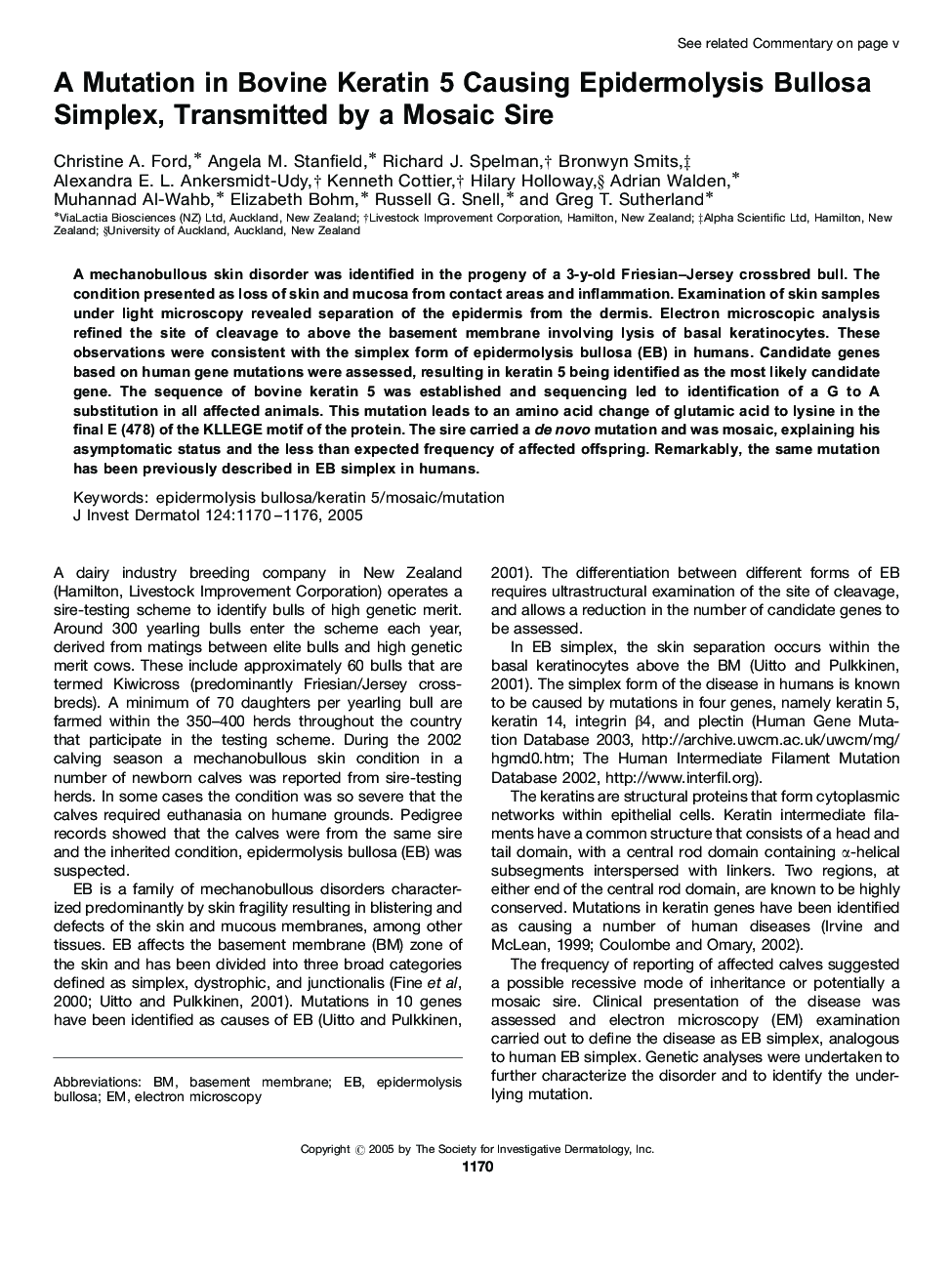| Article ID | Journal | Published Year | Pages | File Type |
|---|---|---|---|---|
| 9230148 | Journal of Investigative Dermatology | 2005 | 7 Pages |
Abstract
A mechanobullous skin disorder was identified in the progeny of a 3-y-old Friesian-Jersey crossbred bull. The condition presented as loss of skin and mucosa from contact areas and inflammation. Examination of skin samples under light microscopy revealed separation of the epidermis from the dermis. Electron microscopic analysis refined the site of cleavage to above the basement membrane involving lysis of basal keratinocytes. These observations were consistent with the simplex form of epidermolysis bullosa (EB) in humans. Candidate genes based on human gene mutations were assessed, resulting in keratin 5 being identified as the most likely candidate gene. The sequence of bovine keratin 5 was established and sequencing led to identification of a G to A substitution in all affected animals. This mutation leads to an amino acid change of glutamic acid to lysine in the final E (478) of the KLLEGE motif of the protein. The sire carried a de novo mutation and was mosaic, explaining his asymptomatic status and the less than expected frequency of affected offspring. Remarkably, the same mutation has been previously described in EB simplex in humans.
Related Topics
Health Sciences
Medicine and Dentistry
Dermatology
Authors
Christine A. Ford, Angela M. Stanfield, Richard J. Spelman, Bronwyn Smits, Alexandra E.L. Ankersmidt-Udy, Kenneth Cottier, Hilary Holloway, Adrian Walden, Muhannad Al-Wahb, Elizabeth Bohm, Russell G. Snell, Greg T. Sutherland,
